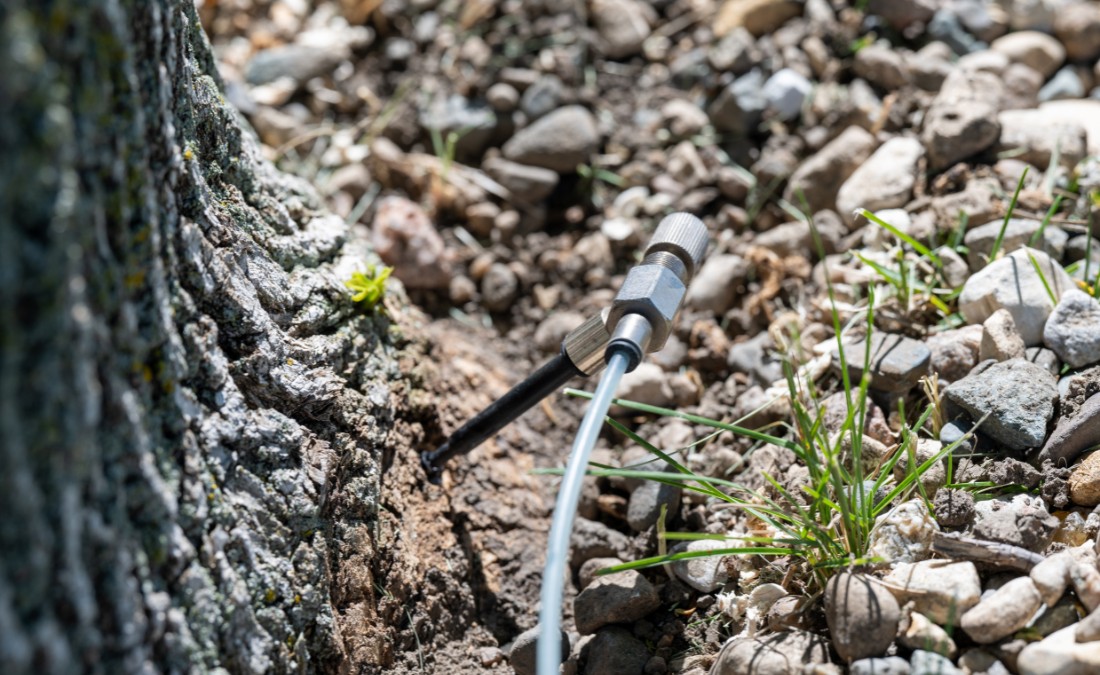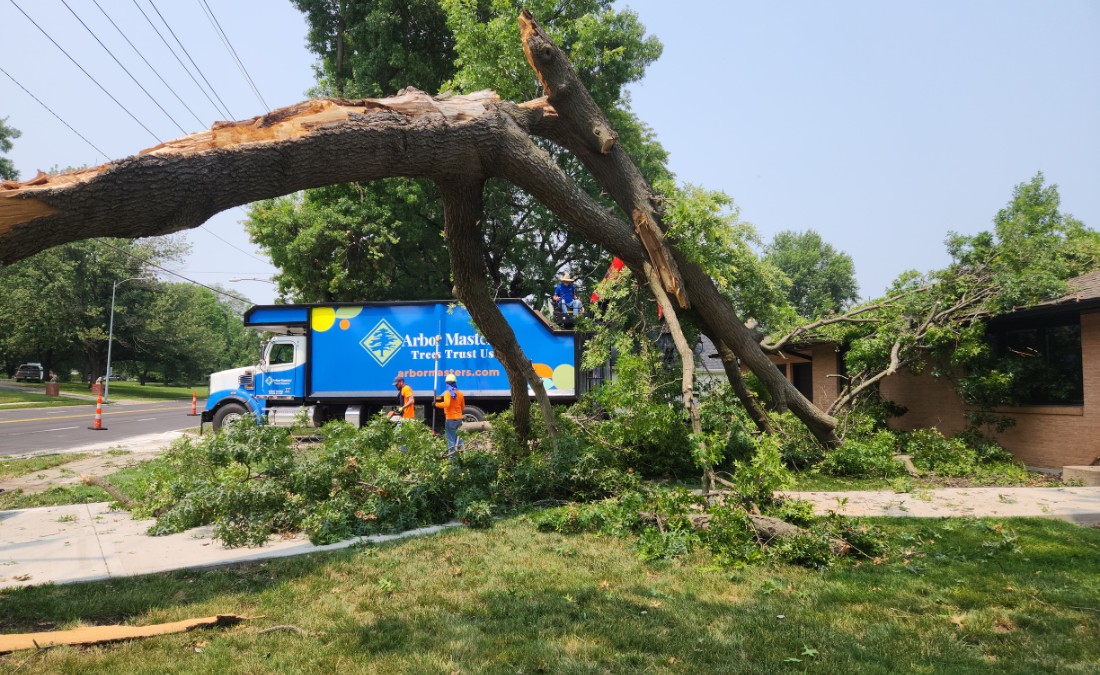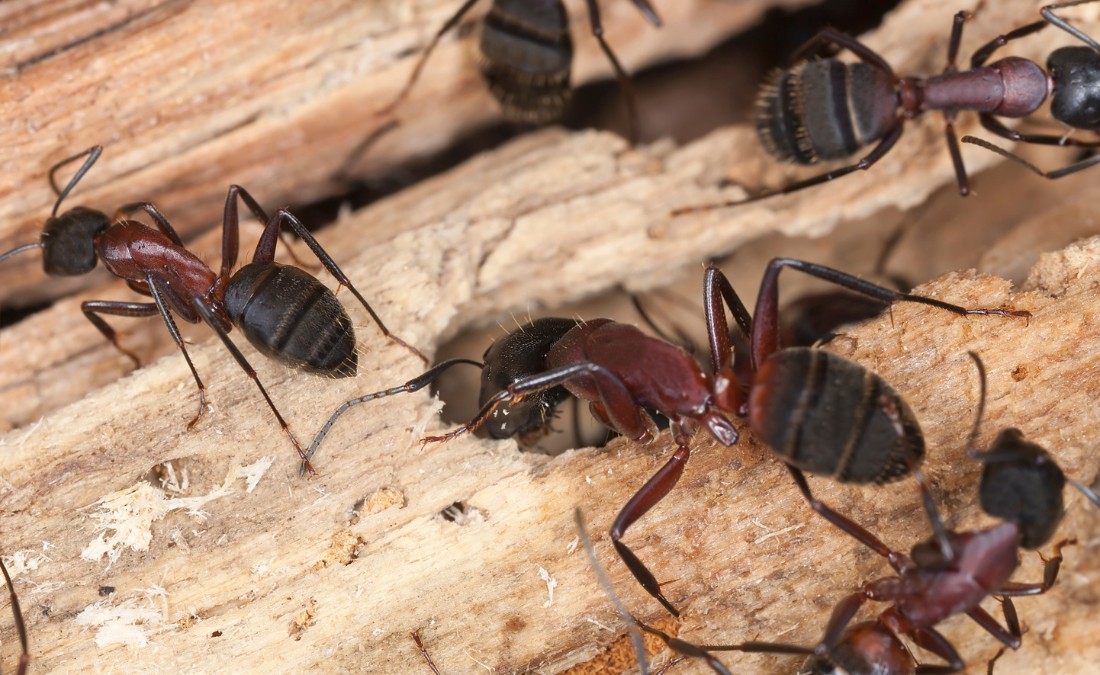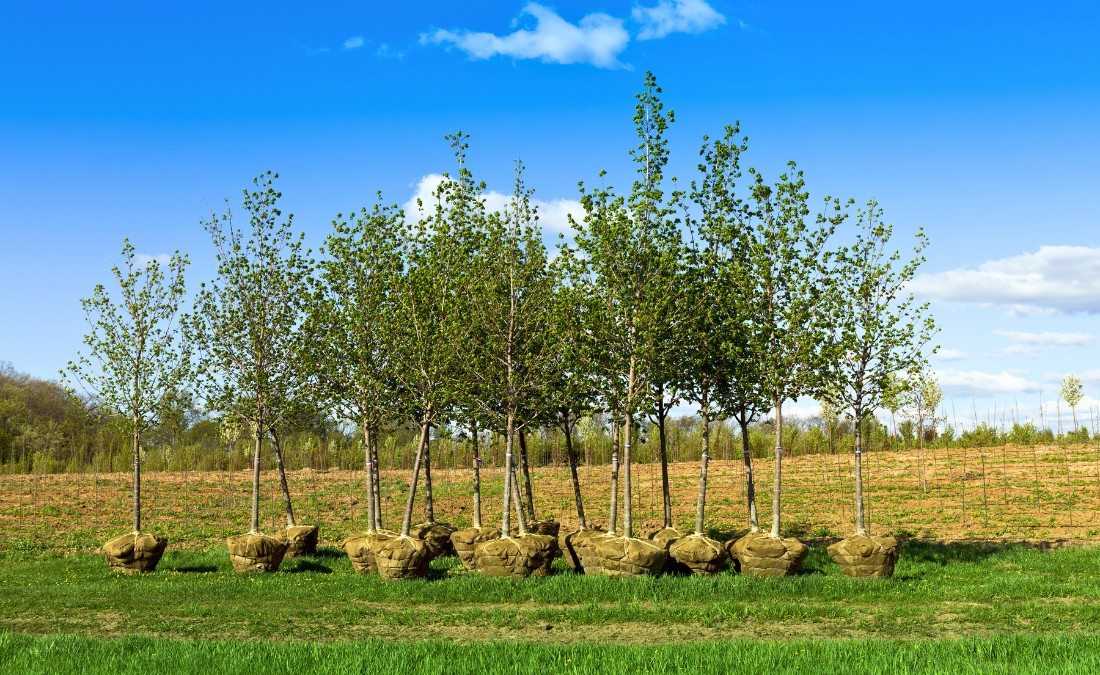Anthracnose: Identifying, Treating & Preventing This Common Tree Fungus

Anthracnose is a plant disease caused by fungi. It can cause severe damage to many species of trees, shrubs and other plants if left untreated.
Anthracnose is a plant disease caused by fungi. It can cause severe damage to many species of trees, shrubs and other plants if left untreated. When anthracnose strikes, contract your arborist to assess and recommend services.
Dogwood anthracnose was first discovered in Eastern North America in the 1970s, eventually resulting in severe losses to natural stands of dogwoods in mountainous regions. It wasn’t until 1991 that the culprit – discula destructiva – was identified as the cause of anthracnose.
How does Anthracnose affect plants?
Many species of garden plants, shrubs and trees are susceptible to anthracnose, but some of the most common include ash, maple, sycamore, redbud filbert and oak trees. Other plants such as peonies, liriope (lilyturfs) and even garden fruits and vegetables also may be affected. It is important to note that anthracnose does not discriminate; it can affect any plant or tree regardless of age or condition, but it is also species-specific– sycamore anthracnose does not infect maples or oaks, for example.
Symptoms of Anthracnose
Anthracnose symptoms vary depending on what plant it has infected, but the disease often manifests itself through discoloration and wilting of leaves or fruits and necrosis of petioles and twigs.
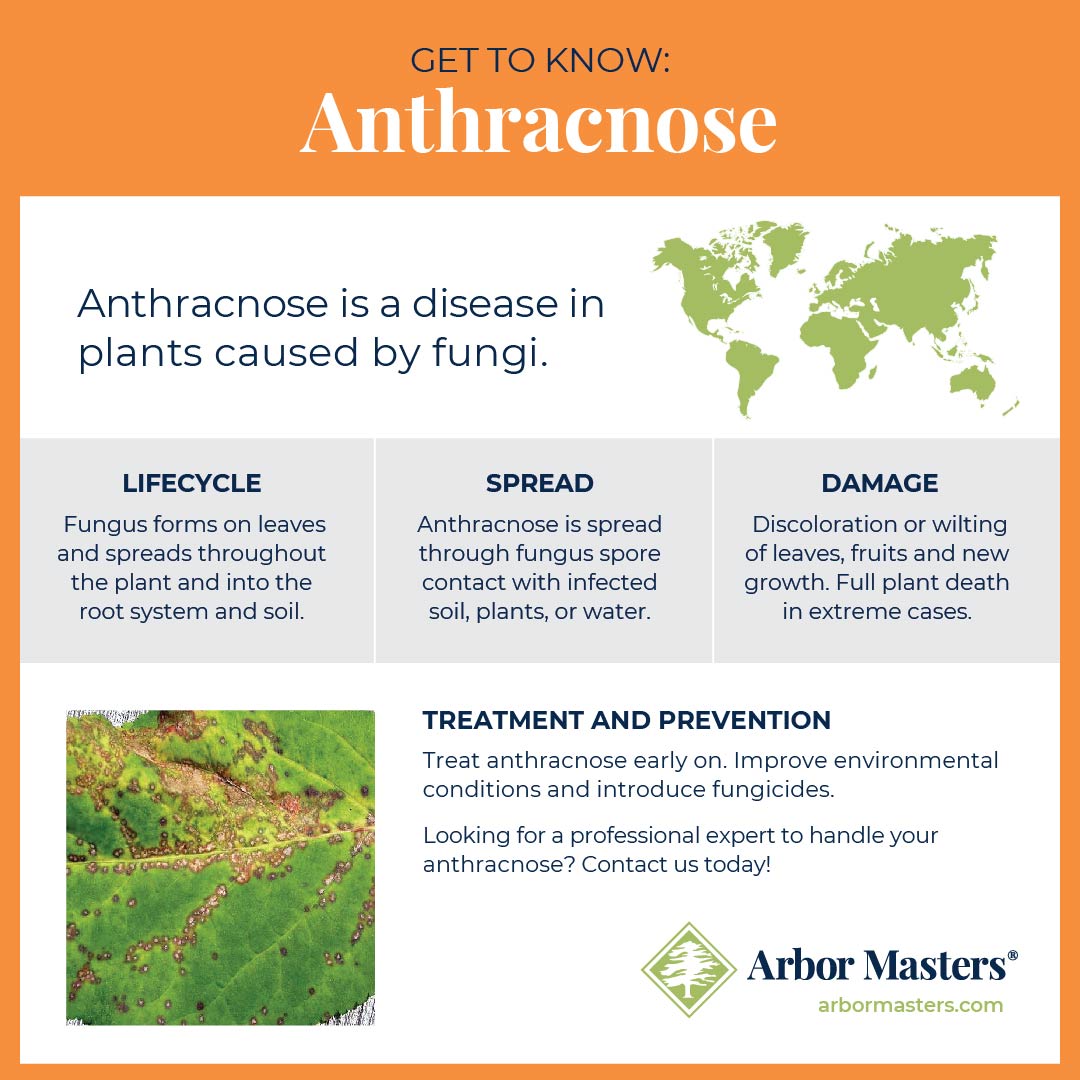
Anthracnose is particularly hard to treat because the fungal spores that cause it can enter the host plant’s system through foliar contact and wounds in its bark.
Will Anthracnose Kill My Trees?
In very rare cases, anthracnose can lead to plant death. According to Iowa State University, anthracnose fungus can also cause death of buds and twigs on trees.
The death of new shoot growth for repeated years can result in a gnarled or crooked branch growth, as side shoots take over as the new leader branches.
How to Identify Anthracnose

Example of necrotic death caused by anthracnose on a squash leaf.
To protect your plants, learn how to identify anthracnose in its early stages. A few common symptoms include:
- Necrotic (dead) spots on the leaves or fruits of a plant
- Discoloration and wilting of leaves
- Stunted growth on the ends of branches
The fungus usually appears during wet weather.
If you see any signs of anthracnose or other plant and tree diseases, it is important to contact your local arborists for a consultation. Some symptoms from drought and other stressful growing conditions can mimic anthracnose. At Arbor Masters, we specialize in comprehensive plant health care, taking care of your trees and shrubs from the ground up to keep them in perfect health.
The Science of Anthracnose
What is the Anthracnose Life Cycle?
Anthracnose is caused by several species of fungi, each with its own life cycle. Depending on the fungus, anthracnose can cause damage throughout the year or only during certain seasons. Generally, anthracnose will begin as tiny spots on leaves and fruits that turn into necrotic lesions. These lesions are where fungus spores are released, allowing anthracnose to spread.
How Does Anthracnose Spread?
Anthracnose is spread primarily through contact with infected foliage Fungal spores can be spread via wind and rain and splashing water. It is important to take preventive measures, such as improved sanitation.
Does Anthracnose Stay in Soil?
Unfortunately, anthracnose can survive in the soil. According to the University of California, anthracnose can survive for at least nine months without a host plant, allowing for further disease spread after getting rid of the original host. Although the spores may not be active, they will remain viable and can cause infection.
Will Anthracnose Go Away on its Own?
Maybe. In rare cases, anthracnose can go away on its own; however, it is best to take steps to control anthracnose early on before it has a chance to spread and cause significant damage. At Arbor Masters, we look to prevent anthracnose through fertilization, slow-release immune boost and granular treatment.
How to get rid of Anthracnose
Fungal and Anthracnose Treatments
Fortunately, anthracnose doesn’t have to mean the end of a garden or landscape. With proper plant health care, anthracnose can be managed and even prevented. Improved sanitation practices such as removing infected plants can also go a long way in controlling the disease. Additionally, environmental practices such as planting anthracnose-resistant varieties may help prevent infection.
When to Treat for Anthracnose
As with any plant disease, it is important to stay vigilant when it comes to anthracnose so that steps can be taken early on to stop its spread and protect your plants from further harm. Treat anthracnose early on before it has had a chance to spread too far and cause excessive damage.
If you are seeing symptoms of anthracnose, contact us today to learn more about our comprehensive plant health care and disease control practices.
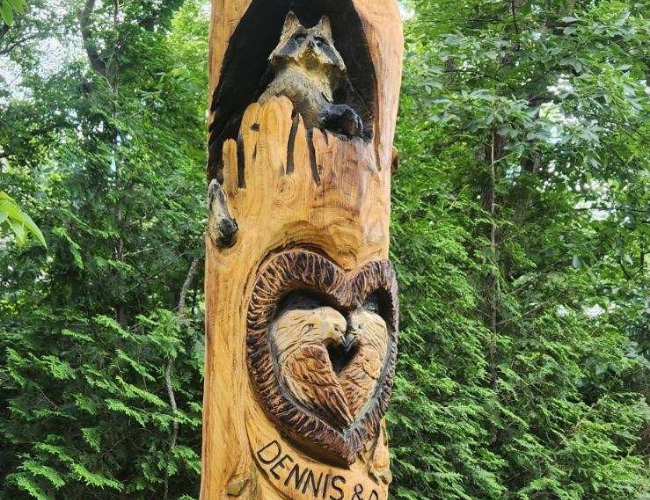
Want More Like This?
Get the latest local news, tree care tips, special offers, and company updates directly to your inbox! It's easy to subscribe and there's no spam - we promise.
"*" indicates required fields

